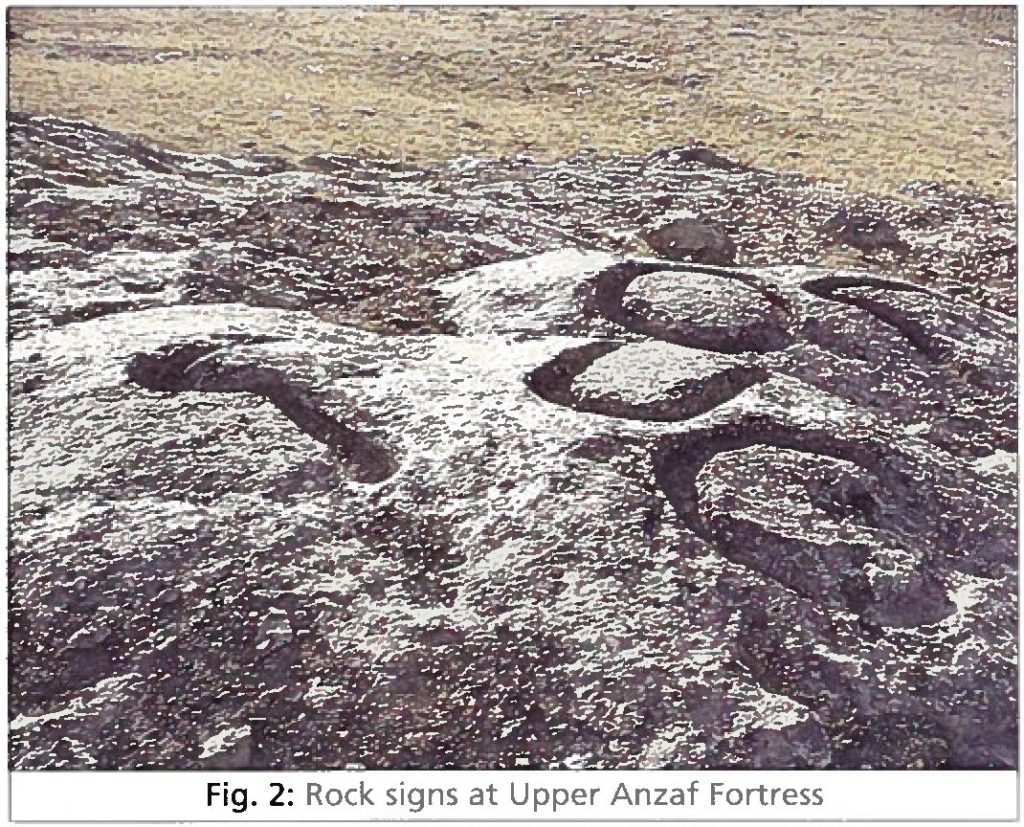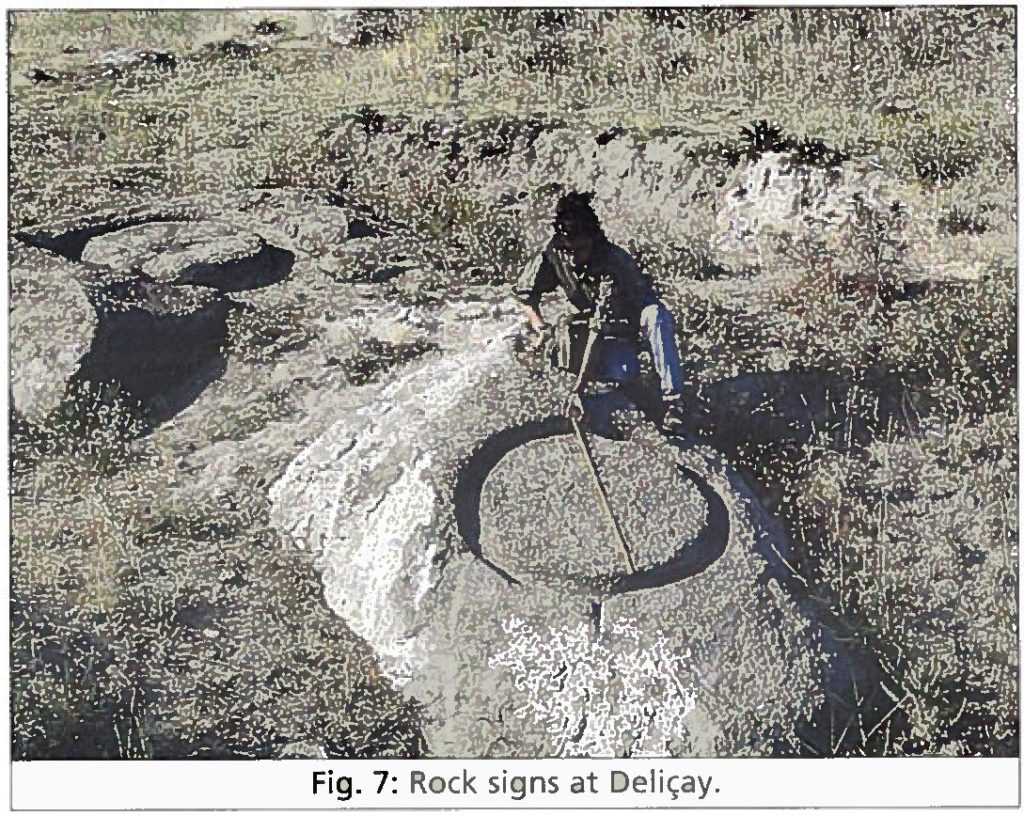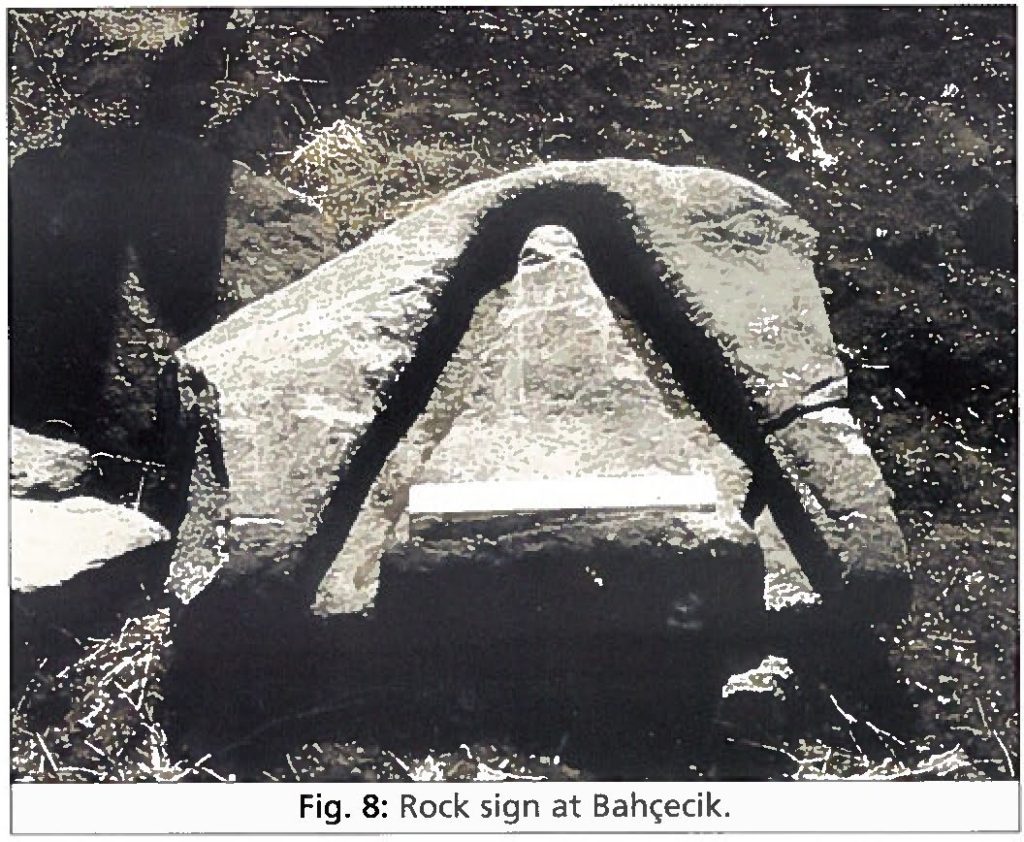(Guest post by A.D. Riddle.)
At Urartian sites in northeast Anatolia, archaeologists have discovered geometric “rock signs” that were cut into bedrock. Some 134 signs have been found at 20 different sites (fortresses, canals, graves) in modern Turkey, Armenia, and Iran. The signs are circular, “U”-shaped, “V”-shaped, or sickle-shaped, and they are dated to the 8th and 7th centuries B.C. Regardless of location, the signs are all very similar in shape and dimensions to one another, with the signs from the later period being slightly smaller than the earlier ones.
It was originally thought the rock signs were used for grape presses, but this has been ruled out. Other ideas included quarries, hieroglyphs, or some religious function, but the conclusion is “there are no definite answers for now” (Belli 2001: 368).
In 2006, Erkan Konyar suggested that the rock signs were molds for shaping wooden chariot parts, and perhaps other wooden implements. (A pdf of his essay can be downloaded here.) He was able to identify the same component parts in depictions of chariots in Urartian and Assyrian reliefs, and the rock signs appear to correspond in shape and dimension to wheels, axle-braces, spokes, yokes, and hooks.
If he is correct, the “V”-shaped signs would have been molds for braces, spokes, and/or yokes.
The dimensions of the “V”-shaped signs are fairly close to the dimensions given for the “V” marks in the City of David (see here and here). The City of David marks are 5 cm deep and the Urartian rock signs are 4-10 cm deep. The City of David marks are 50 cm in length, and the Urartian “V” rock signs vary between 60 and 70 cm in length.
So, could the City of David marks be molds for shaping wooden implements? The wood would have to be softened in water first, and the marks appear to be conveniently located near Jerusalem’s water source. It would be irresponsible to suggest anything further at this point since we still have not heard many of the details about the marks from the City of David’s excavators, but the similarities with Urartian signs and the interpretation of them by Konyar are intriguing.
REFERENCES
Belli, Oktay.
2001 “Surveys of Monumental Urartian Rock Signs in East Anatolia.” Pp. 365-369 in İstanbul University’s Contributions to Archaeology in Turkey (1932-2000). Ed. O. Belli. Istanbul: İstanbul University Rectorate Research Fund.
Konyar, Erkan.
2006 “An Ethno-Archaeological Approach to the ‘Monumental Rock Signs’ in Eastern Anatolia.”
Colloquium Anatolicum 5: 113-126.



8 thoughts on “Speculating on the Mysterious Marks in City of David”
Fascinating! Thanks for sharing this PDF and thanks to Erkan Konyar for an excellent piece of work.
A.D. – great idea and nice research! We have some somewhat similar things in the vicinity of Tell es-Safi/Gath, which I never could explain. Although I'm not sure, I think they date to later than the Iron Age (only on the basis that they are near later rock cut features).
According to the IAA,"Loom weights and a beaten chalk floor were covered with a thick layer of small stone chips that derived from the quarrying of a hard bedrock layer, when the Warren's Shaft system was made deeper. The loom weights indicated that at the end of Iron Age II the place ceased to be used as a public underground water system and was taken over by private individuals, who were engaged in weaving." And this from Qedem 35 Chapter 3, "The limited number of whorls and loom weights found in the City of David provides evidence for domestic weaving activity. A large quantity of sheep bones was found in the City of David. The limited weaving and spinning activity in the City of David thus probably utilized wool. Before the dying of wool can take place, the oils have to be removed, a process called "fulling".
Though this is a very interesting idea, & I'm grateful for you presenting it here, I have my doubts. Since it would take some considerable time to form the wet wood & allow it to dry/harden, I would expect to find many more such molds in the same locations to accommodate large quantities of chariots, which would need frequent maintenance & replacements. I'm thinking of large quantities of presses at Ekron, hives at Rehov, cellars at Gibeon, & would expect a Judean chariot-manufacturing facility to have equally prodigious quantities of molds. A single cluster in the COD just doesn't tip the scales for me.
When Rabshakeh called to king Hezekiah, Eliakim the son of Hilkiah , which was head over the household came out to them (II Kings 18:18). This verse helps us to understand that Rabshakeh was near the palace when he called to the king. The previous verse tells us where they were standing when they called to the king: "…by the conduit of the upper pool, which is in the highway of the fuller's field." The palace has been shown to be on top of the ridge and the upper pool and associated conduit are located at the bottom of the ridge, below the palace. Is it too far a stretch to consider that this area in between was utilized by the fullers?
G. M. — I am speculating that these are molds for shaping wood, though not necessarily for chariot parts. Given that we only have “V” marks in City of David (so far as I know from the two available photos), perhaps they molded only the wood components needed to harness an animal or team of animals. In either case, I am a long ways off from drawing conclusions. I was simply drawing attention to the similarity with Urartian rock signs and their possible interpretation.
A. B. — The news reports stated that the marks were found in a “room near a spring” and that “there were no finds to offer any clues pointing to the identity of who made them or what purpose they served.” In other words, I am not clear on how to associate the loom weights, whorls and other objects you mentioned with the room where the marks were found. The idea I proposed here is speculation based on a similarity, but I am not ready to get into an argument about it when we have so little data. Your suggestion is possible, but I do not know how to prove or to disprove it.
A.D.
Having done some wood shaping myself, I would love to see more of the molds. Perhaps skinny sticks were bent and then placed within the mold (then bound), but otherwise I would expect a series of molds that are between straight and a sharp angle. Wood bending is a slow and gradual process.
I like the Jerusalem examples best as they could be used in conjunction with each other to slowly gain the leverage and control necessary.
Water was mentioned as helpful in the process, but I would emphasize the element of heat in the list. Both help promote elasticity in the cells but a regulated, warm temperature helps immensely. I would be interested to know if there was evidence of burning nearby. What a neat way to consider ancient wood-bending technology!
Rather than bending wood, placing tall flat wooden slats over which slaughtered animals were hung to remove their innards and legs before washing and offering Leviticus1:13
http://www.gihonmystery.com